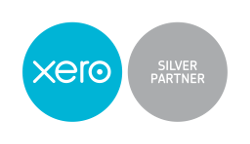Your balance sheet is a statement of assets, liabilities, and capital of your business at a particular time, detailing the income and expenses over a set period. Typically a balance sheet is prepared every quarter or annually and is one of the financial statements that’s used to evaluate your business.
Two concepts that are essentially used to account for the decreasing value of assets over time are depreciation and amortization. Find answers to frequently asked questions about depreciation and amortization here…
What is the difference between amortization and depreciation?
The main difference is that amortization deals with intangible assets whilst depreciation is for physical property. An intangible asset refers to goodwill, brand recognition, patents, trademarks, and copyrights, for example. For intangible assets that are acquired rather than created by your business, the amortization period should be calculated at around 15 years.
Tangible assets include land, vehicles, equipment, and inventory. For tangible assets depreciation is the reduction in value with the passage of time and the process will gradually write off their expenses.
They do however share similar traits. Both are cost-recovery options for businesses that help reduce operating costs. They are also non-cash expenses and are treated as reductions from fixed assets in the balance sheet. And both are subject to impairment which means that their carrying amounts can be recorded.
What is accumulated amortization?
Accumulated amortization is the cumulative amount of all amortization expenses that has been charged against an intangible asset. It’s typically calculated on a straight-line basis and can be presented as intangible assets net of accumulated amortization on the balance sheet.
Where does amortization go on the balance sheet?
The amortization of tangible assets is recorded on the balance sheet by reducing the book value of each asset amortized. It’s listed as a contra asset account and is positioned below the unamortized intangible assets line item with the net amount of intangible items listed immediately below.
Where is depreciation and amortization on a balance sheet?
The two most common formats for the balance sheet are the vertical balance sheet where all line items are presented down the left side of the page and the horizontal balance sheet where asset line items are listed down the first column and liabilities and equity line items are listed in a later column.
Depreciation will be listed under current assets and amortization will be listed under non-current assets which include other intangible assets.
Need a personal tax advisor?
When you require the accounting services of a tested tax advisor a personal accountant in London will provide you with everything you need. Consulting teams will offer a portfolio of specific accounting with time-saving and simple online accounting solutions.
You’ll be able to arrange the preparation of your statutory accounts where any depreciation and amortization on your balance sheet will be taken care of for you. This is a great value option to ensure you fulfil your accounts obligations accurately and on time.



0 Comments